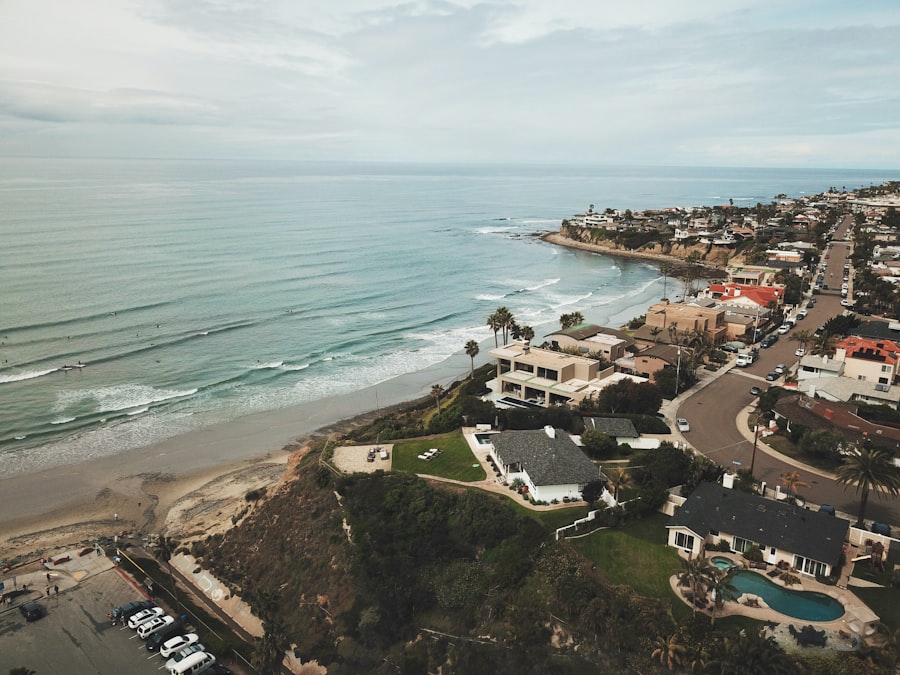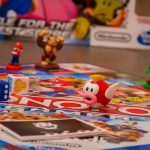Download links
How to install Discover the Beauty of Ph630 Boracay: A Tropical Paradise APK?
1. Tap the downloaded Discover the Beauty of Ph630 Boracay: A Tropical Paradise APK file.
2. Touch install.
3. Follow the steps on the screen.
Description
Boracay, a small island located in the central Philippines, is often heralded as one of the most beautiful tropical destinations in the world. Renowned for its powdery white sand beaches and crystal-clear waters, Boracay has become a magnet for travelers seeking both relaxation and adventure. The island spans approximately 7 kilometers in length and is surrounded by a vibrant coral reef, making it not only a picturesque getaway but also a hub for marine biodiversity.
Its stunning landscapes, coupled with a lively atmosphere, have earned Boracay a place on numerous travel lists, including the coveted title of “Best Island in the World” by various travel publications. The island’s charm lies not only in its natural beauty but also in its rich cultural heritage. The local population, primarily composed of the Ati people, has a history that dates back centuries.
Their traditions and customs are woven into the fabric of Boracay, creating a unique blend of indigenous culture and modern influences. As tourism flourished in the late 20th century, Boracay transformed into a bustling resort destination, attracting visitors from all corners of the globe. Despite this rapid development, efforts have been made to preserve the island’s natural environment and cultural identity, ensuring that Boracay remains a tropical paradise for generations to come.
Key Takeaways
- Boracay is a tropical paradise known for its stunning beaches, crystal-clear waters, and vibrant marine life.
- The pristine beaches of Boracay, such as White Beach and Puka Shell Beach, offer powdery white sand and breathtaking sunsets.
- Visitors can explore the diverse marine life in Boracay through activities like snorkeling, scuba diving, and helmet diving.
- Boracay offers a wide range of activities and adventures, including water sports, island hopping, and cliff diving.
- The unique culture and cuisine of Boracay reflect a blend of Filipino, Spanish, and Chinese influences, with delicious seafood and traditional dishes. Sustainable tourism efforts in Boracay aim to preserve the island’s natural beauty and protect its environment for future generations.
The Pristine Beaches of Boracay
Exploring White Beach Stations
Station 1 is known for its upscale resorts and quieter ambiance, while Station 2 buzzes with activity, featuring numerous bars, restaurants, and shops. Station 3 offers a more laid-back vibe, perfect for those seeking solitude amidst the beauty of nature.
Discovering Other Idyllic Shorelines
Beyond White Beach, Boracay boasts several other idyllic shorelines worth exploring.
This beach is less crowded than White Beach and provides a serene environment for sunbathing and swimming. Another hidden gem is Bulabog Beach, which faces east and is renowned for its windsurfing and kitesurfing opportunities.
A Beach for Every Preference
The beach transforms into a vibrant hub of activity during the windy season, attracting water sports enthusiasts from around the world. Each beach on Boracay offers its own unique experience, catering to diverse preferences and interests.
Exploring the Marine Life in Boracay

The waters surrounding Boracay are teeming with marine life, making it a prime destination for snorkeling and diving enthusiasts. The coral reefs that encircle the island are home to an array of colorful fish species, sea turtles, and other fascinating marine creatures. One of the most popular diving spots is Crocodile Island, located just a short boat ride away from Boracay.
This site features vibrant coral gardens and an abundance of marine biodiversity, providing divers with an unforgettable underwater experience. For those who prefer to stay closer to shore, snorkeling at sites like Coral Garden offers an equally mesmerizing glimpse into the underwater world. Here, visitors can swim among schools of tropical fish and observe the intricate patterns of coral formations.
Guided snorkeling tours are available, allowing participants to learn about the local ecosystem while enjoying the beauty of Boracay’s marine life. The island’s commitment to preserving its natural resources has led to initiatives aimed at protecting these delicate ecosystems, ensuring that future generations can continue to explore and appreciate the underwater wonders of Boracay.
Activities and Adventures in Boracay
| Activity | Location | Duration | Price |
|---|---|---|---|
| Island Hopping | Boracay | 4 hours | ₱1500 |
| Parasailing | White Beach | 15 minutes | ₱2500 |
| Helmet Diving | Bulabog Beach | 30 minutes | ₱1200 |
| ATV Adventure | Mount Luho | 1 hour | ₱1500 |
Boracay is not just about lounging on the beach; it offers a plethora of activities that cater to thrill-seekers and adventure lovers alike. One of the most exhilarating experiences is parasailing, where participants are harnessed to a parachute and towed behind a boat, soaring high above the island’s stunning coastline. This bird’s-eye view provides an unparalleled perspective of Boracay’s beauty and is an experience that many travelers cherish.
For those looking for more grounded adventures, ATV rides through the island’s rugged terrain offer an adrenaline-pumping way to explore Boracay’s interior. Riders can navigate through dirt paths, lush vegetation, and even visit scenic viewpoints that showcase breathtaking panoramas of the island. Additionally, zip-lining across lush landscapes provides another thrilling option for adventure enthusiasts.
These activities not only provide excitement but also allow visitors to connect with Boracay’s natural beauty in a unique way.
The Unique Culture and Cuisine of Boracay
Boracay’s culture is a vibrant tapestry woven from its indigenous roots and influences from various cultures brought by tourists and settlers over the years. The Ati people, who are considered the original inhabitants of the island, have preserved their traditions through music, dance, and festivals. One such celebration is the Ati-Atihan Festival, held annually in January to honor the Santo Niño (the Holy Child).
This lively festival features colorful parades, traditional music, and dance performances that showcase the rich cultural heritage of the Ati people. Culinary experiences in Boracay are equally diverse and enticing. The island’s cuisine reflects its coastal location, with an abundance of fresh seafood available at local eateries and upscale restaurants alike.
Dishes such as grilled squid, kinilaw (a Filipino ceviche), and adobo (a savory meat stew) are staples that visitors must try. Street food vendors also offer delicious treats like fish balls and banana cue (fried bananas on skewers), providing an authentic taste of local flavors. Dining in Boracay often comes with stunning views of the sunset over the ocean, creating a memorable experience that combines gastronomy with breathtaking scenery.
Sustainable Tourism in Boracay

Rehabilitation and Infrastructure Improvements
In 2018, Boracay underwent a six-month rehabilitation period, during which infrastructure improvements were made to enhance waste management systems and restore natural habitats. This initiative aimed to strike a balance between tourism development and environmental preservation.
Embracing Eco-Friendly Practices
Sustainable tourism practices are now being encouraged among both visitors and local businesses. Eco-friendly resorts have emerged, offering accommodations that prioritize sustainability through energy-efficient designs and waste reduction initiatives. Tour operators are also promoting responsible tourism by educating guests about marine conservation efforts and encouraging them to participate in beach clean-up activities.
A Brighter Future for Boracay
By fostering a culture of sustainability, Boracay aims to protect its natural beauty while continuing to welcome travelers from around the world. The commitment to sustainable tourism not only benefits the environment but also enhances the overall visitor experience. Travelers are increasingly seeking destinations that prioritize ecological responsibility and cultural preservation. By embracing these principles, Boracay can maintain its status as a tropical paradise while ensuring that future generations can enjoy its breathtaking landscapes and vibrant culture.
If you’re a fan of mobile gaming, you may also be interested in checking out the article on Hill Climb Racing 2 on PH630. This popular racing game offers exciting challenges and fun gameplay that will keep you entertained for hours. Whether you’re a casual gamer or a hardcore enthusiast, Hill Climb Racing 2 is sure to provide you with hours of entertainment.
FAQs
What is ph630 Boracay?
ph630 Boracay is a proposed development project in Boracay, Philippines. It aims to create a sustainable and environmentally friendly tourism destination on the island.
What are the key features of ph630 Boracay?
The key features of ph630 Boracay include eco-friendly accommodations, sustainable infrastructure, and responsible tourism practices. The project also aims to preserve the natural beauty of the island while providing a high-quality experience for visitors.
Who is behind the ph630 Boracay project?
The ph630 Boracay project is being developed by a consortium of companies and organizations, including local and international partners. The project is supported by the Philippine government and is guided by principles of sustainable development.
What are the goals of the ph630 Boracay project?
The goals of the ph630 Boracay project include promoting sustainable tourism, preserving the natural environment, and supporting the local community. The project aims to create a model for responsible tourism development that can be replicated in other destinations.
How will ph630 Boracay benefit the local community?
ph630 Boracay is expected to create job opportunities for local residents, support small businesses, and contribute to the overall economic development of the island. The project also includes initiatives to involve the local community in decision-making and to promote cultural preservation.





